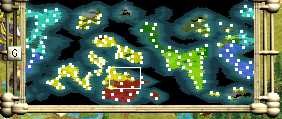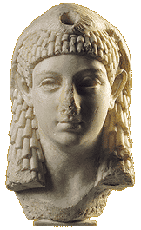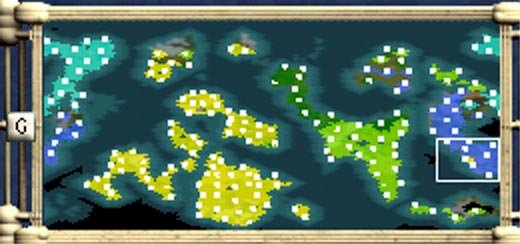This is my first GOTM on this site, and my first game not playing with eight civs on all-standard settings. As a result, I took a different approach from most of you, which led to pretty obvious problems, and some solutions I'd never tried before. The result is a still-ongoing game that has been very challenging, and consistently fun.
OUTER SPACE OR BUST
As soon as I realized that I was alone on an island, I made the decision not to go for a domination win, and focused instead on the space race. The idea of building the FP in a totally corrupt city without a Great Leader also didn't appeal to me, and I had no horses, so I made a second, more fateful decision to limit most of my expansion to my home island, and build a small, low-corruption civ. As you probably guessed, this led to a game where my strategy was dictated by an almost-total lack of homegrown strategic resources.
I spaced my cities for maximum expansion, filled in the island, and built infrastructure. Aced out of the Colossus and the Lighthouse, I settled for the Great Library. I encountered the Japanese around 400 BC, and established contact with all of the civs by the time I entered the Middle Ages. At this point - 100 or 200 AD - I was already second from the bottom in points, a republic with about 15 cities, but was even in tech and second to Japan in culture.
MIDDLE AGE SAG
The Middle Ages led to very limited off-shore expansion: one city to bring in horses, another to snag the dye cluster, and a few other random ones. I managed to build Bach's and Newton's, but started to fall behind in tech. In the meantime, Japan was pulling out in front of everyone, Persia steadily ground down the Aztecs, and the Germans and America began what would be a long, inconclusive war. Egypt avoided all war except one with America where not a shot was fired, occasionally paying tribute.
The downside to not being expansionist on a large map with a low number of civs became painfully obvious as I entered the Industrial Age around 1040. Egypt lacked both saltpeter and coal. I considered invading the far-off Aztecs for saltpeter, but found some unclaimed on the dye island. More problematic was no coal. At this point, only the Germans had it, so trading for it was impossible. But a small civ like mine virtually required it both to generate a competitive number of shields, and to employ a small but mobile defense force. Unfortunately, my army consisted of about 20 spearmen led by two archers, and it would be a long time before I gained the ability to send back the saltpeter to the homeland for cavalry.
IF I CAN'T TRADE FOR COAL...
It was time for Egypt to make a bold move. I loaded one settler and seven freshly-built vet riflemen onto two galleons, sailed over to the German coal tile - conveniently on the coast - and plopped all eight units atop it in 1140. I allied myself with the Americans, built a city on the coal tile one turn later, and hunkered down. To my surprise, that the Germans ignored me, moving past to defend the cities to the north against the invading Americans. I quickly built a harbor, temple, and barracks, then waited for an opportunity to make peace with the Germans, so that I could ship the coal back home.
Peace with Germany came a century later. I spent that time trading luxuries for tech, falling no further behind, and researching straight for Scientific Method. I reached that first, and sold it at a fairly safe point for lots of everything. On the military front, I decided that there was no point to building cavalry, as infantry would soon be a more useful all-around unit. So I built enough riflemen to guard all of my cities (and two cavalry, by mistake).
THE GLORIOUS CENTURY
By 1300, everything started to come together. I switched to democracy, killed a rare German longbowman with my lone War Chariot to launch a Golden Age, and - most importantly - built the Theory of Evolution in 1320. This gave me enough of a lead in one tech branch to catch up where I was behind, and take the overall tech lead for good. It also gave me a huge supply of gold which, combined with the three luxuries I controlled, allowed me to trade the Americans for oil, and the Japanese for rubber. (Yes, I lacked those resources as well.)
While I couldn't build Hoover's - no rivers - my revved-up workers cranked out one railroaded grassland tile per turn each, while my cities built factories and coal plants. These focused mainly on airports and tanks. In 1375, Egypt entered the Modern Age ahead of all the other civs, and its four tanks were the only ones on the globe. By 1400, when the Golden Age ended, Egypt was still second-worst in points and fourth in size and population... but it was first in productivity and mfg. goods, second in income, and third in gnp. My war chest had 3500 gold, and rising. And every single tile was mined and railroaded.
WHAT DOES THE FUTURE HOLD? ALUMINUM AND URANIUM, I HOPE
Things look good, even though I've never played a game like this one. As a rule, my forces consist almost solely of fastmovers, but in this game I built almost none entering the modern age, and used only one offensively: the War Chariot that launched my GA. My war totals are one city built on foreign territory, and one chariot killed, to about four of the enemy. In the end, this is a very contained builder game that turned around on two key successes: the taking of the German coal, and the building of the TOE.
The plan for the end game is to build a force of about 20 tanks, and enough airports to have instant global deployment in case of attack. One settler is en route to claim some available oil on a tiny northern island that the dying Aztecs haven't quite filled in. This leaves only rubber as something for which to trade, so whatever gold is left over can be fully applied to maxing the science rate.
What lies between Egypt and the stars? Well, call it a hunch, but I expect to find no aluminum or uranium on any of my tiles. And the AI will close on me in tech, even tough I expect to build SETI. That said, I doubt the AI will beat me to space. I'll let you know how it turns out.



 Hence my people is saluting for the war!? My government type is Monarchy. May be I missed something in the rules of game?
Hence my people is saluting for the war!? My government type is Monarchy. May be I missed something in the rules of game?



 The question is, do I go for the UN and hope I'm popular enough for diplomatic victory, or cut off the strategic supplies to Japan (Iron) and Persia (rubber ) - the two leading civs - and build up for a war? Just entering Modern Age right now. Decisions decisions. UN is probably safer - but I'd hate to lose my first Emperor game at the UN!
The question is, do I go for the UN and hope I'm popular enough for diplomatic victory, or cut off the strategic supplies to Japan (Iron) and Persia (rubber ) - the two leading civs - and build up for a war? Just entering Modern Age right now. Decisions decisions. UN is probably safer - but I'd hate to lose my first Emperor game at the UN!

